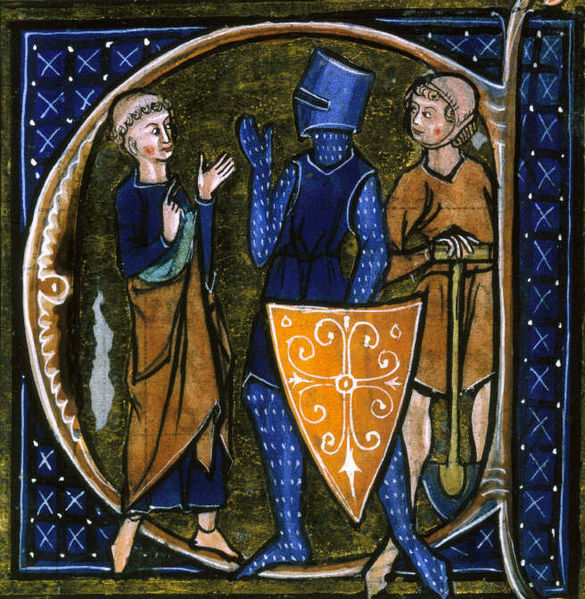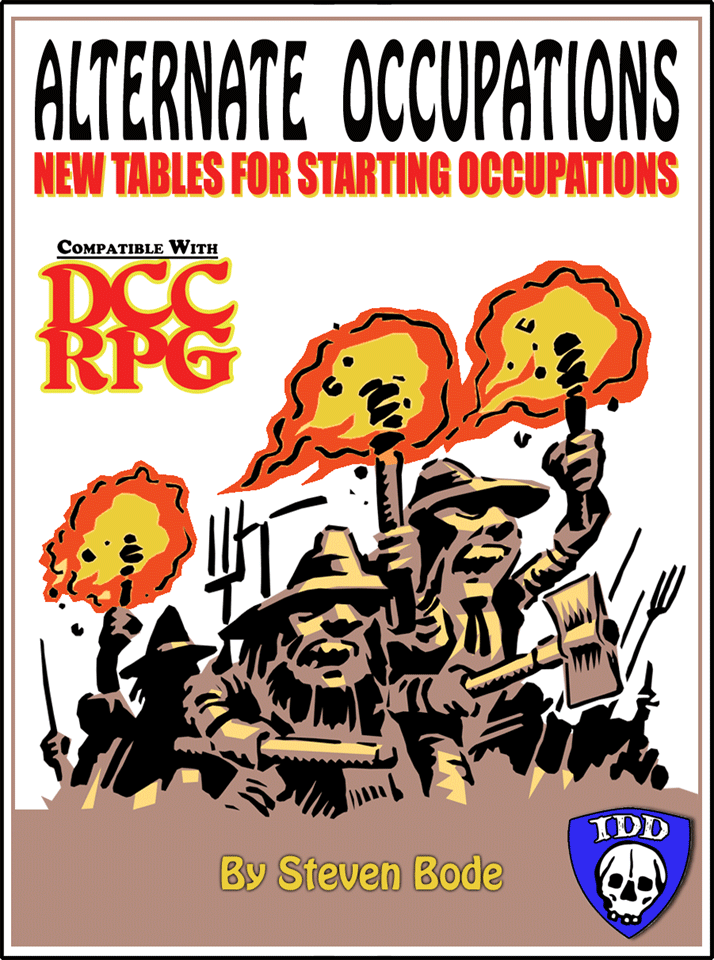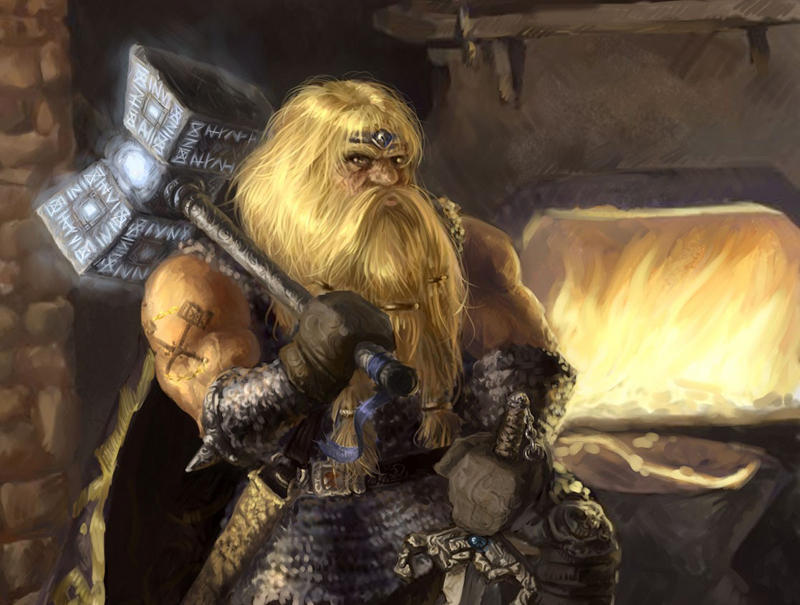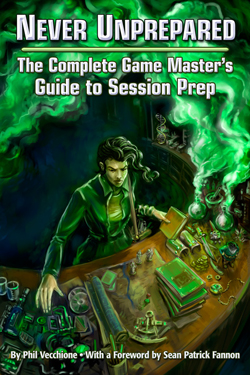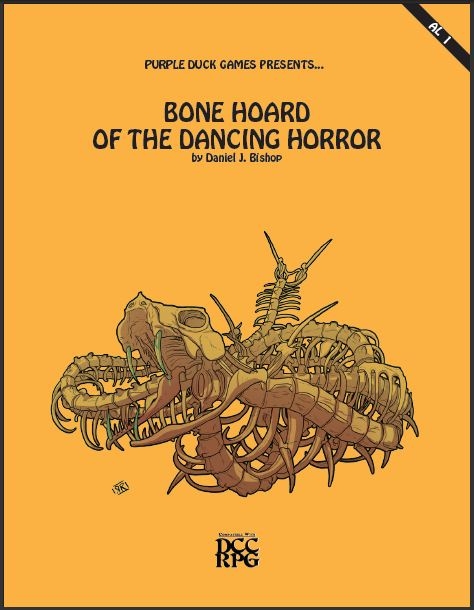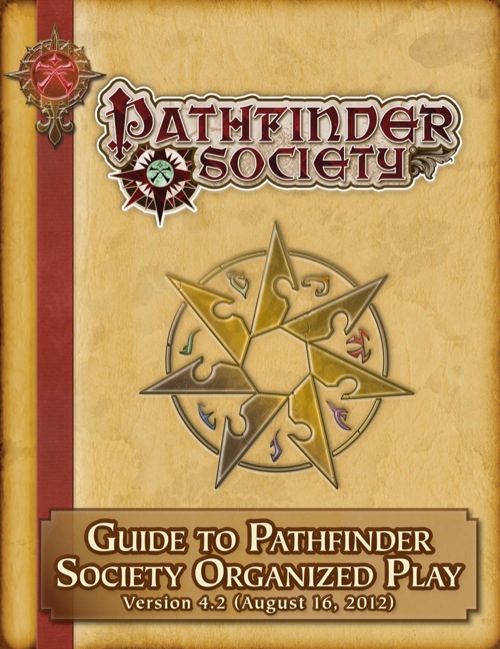 Late yesterday afternoon Paizo released version 4.2 of the Guide to Pathfinder Society Organized Play. Pathfinder Society (PFS) Organized Play is Paizo’s form of organized play for the Pathfinder Roleplaying Game. The Guide is the “rulebook” for participating in PFS. The Guide sees updates throughout the year with the larger one typically coming shortly before Gen Con. This year has proven no different with the release of this version 4.2.
Late yesterday afternoon Paizo released version 4.2 of the Guide to Pathfinder Society Organized Play. Pathfinder Society (PFS) Organized Play is Paizo’s form of organized play for the Pathfinder Roleplaying Game. The Guide is the “rulebook” for participating in PFS. The Guide sees updates throughout the year with the larger one typically coming shortly before Gen Con. This year has proven no different with the release of this version 4.2.
There were several major changes made with this release of the guide along with general clarification of rules in the guide. The major changes were listed on the Paizo Blog and a complete change log was posted to the Pathfinder Society Forums. I encourage you to check those locations for the complete details of the changes as I only intend to mention the larger changes and a couple of the smaller changes.
The larger changes that Paizo calls out on their blog are as follows:
- Added three new races to character creation for all players to choose from: aasimar, tengu, and tiefling.
- Scenarios and sanctioned module now have one unified set of rules for applying Chronicle sheets to pregenerated characters.
- Added all hardcover rulebooks to the Core Assumption for GMs and advised that GMs can refer to the Pathfinder Reference Document for rules from any books they don’t own.
- Updated text so GMs are now allowed to take boons when they are offered on a Chronicle sheet.
I am glad to see the scenarios and sanctioned modules having a unified set of rules for applying chronicle sheets to pregens. That just helps simplify things and make things a little easier to understand and handle correctly. I also think it is great that GMs can now take boons when they are offered on a Chronicle sheet. GMs work hard and it is good to see a GM able to get rewards to apply to their own character.
I am certainly not thrilled about the addition of the three races. I know a lot of people do like that change, but I have never really grown use to what I still consider “fringe” races. I am not a fan of GMing those races and even less of a fan of playing a character next to one of those races. My dislike of this rule is of course a personal bias. I suspect Mike Brock and Mark Moreland have heard frequent requests for these races and are just listening to the community.
While adding all hardcover books to the core assumption is likely a good thing, it does really increase the hurdle for a new GM to PFS. It is nice that Paizo says the PRD is a valid source for the rules removing the monetary hurdle of needing to own all of them, it still is a lot of rules for a new GM to PFS to be expected to know.
With this release of the PFS Guide several archetypes were cut from allowed for play:
- Gravewalker Witch
- Master Summoner
- Synthesist Summoner
- Undead Lord Cleric
- Vivisectionist Alchemist
These archetypes are being removed either for not fitting with Golarion thematically or for power imbalance within organized play. I can respect that and think it is good that the campaign takes steps to correct some of these imbalances. I know I have heard numerous complaints about the Synthesist Summoner and it being ripe for abuse.
Let’s take a look at some of the changes from the change log that stand out to me.
First up:
“The leadership of this campaign assumes that you will use common sense in your interpretation of the rules. This includes being courteous and encouraging a mutual interest in playing, not engaging in endless rules discussions. While you are enjoying the game, be considerate of the others at the table and don’t let your actions keep them from having a good time too. In short, don’t be a jerk.”
I love this addition! So many times rule discussions can turn into something that sounds like two lawyers tearing apart the language used to make their case. Really, at the end of the day, Paizo just wants us to have fun playing this game. While the English language can be torn down to a finite point, use some common sense and try to realize we are here to play the game and have fun. The rules should facilitate that. Great addition!
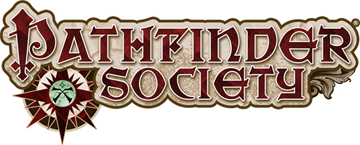 Another added section is in regards to the Pathfinder Society Community:
Another added section is in regards to the Pathfinder Society Community:
You may not simply ignore rules clarifications made by the campaign leadership, including the campaign coordinator and campaign developer, on the paizo.com messageboards. GMs are not required to read every post on the messageboards, but GMs familiar with rules clarifications made by the campaign leadership (which have not been superseded by the Guide to Pathfinder Society Organized Play or FAQ) must abide by these clarifications or rulings. If it is a significant clarification, it will be updated in the FAQ, and later in the Guide to Pathfinder Society Organized Play if necessary.
I think this is a good move at trying to determine how the rulings on the message board are to work. Pretty much if you know something has been clarified on the message boards, but hasn’t made it to the FAQ yet, still follow it. Every effort will be made to add significant items to the FAQ which all GMs are responsible for knowing and following.
First Level retraining is noted in the change log. This is a pretty big deal and a good move for those getting their feet we with Pathfinder or Pathfinder Society in general. This allows a character to change anything they want with their character between adventures and before they hit 2n level as long as the PFS number remains the same. Exceptions to this rebuild will be listed in the PFS FAQ.
A couple of allowed to carry-over spells were added:
A character may have one each of the following spells that carries overs from scenario to scenario: continual flame, masterwork transformation, secret chest, and secret page.
Another good change in my opinion. The continual flame question seems to arise a lot on the message boards. In following with the common sense reading of rules above it only makes sense that continue flame be allowed to last from session to session.
There are numerous other small changes listed in the change log that I am not mentioning here. I have covered what I consider to be the highlights along with some of my commentary on them.
The look and feel of the guide has really improved over the years as well. The layout and feel continue to more closely emulate one of Paizo’s normally released books. Very crisp and clean. The additional attention to the look and feel is important I think as people new to Paizo’s organized play system will have this guide as their first contact with the system.
While I am not a fan of the new races, there are a lot of good changes in the Guide this time around. Whether I agree with the new races or not it does show the Paizo staff is listening to feedback and not afraid to make changes. I do believe they have the best interests of PFS in mind when they make these changes.





